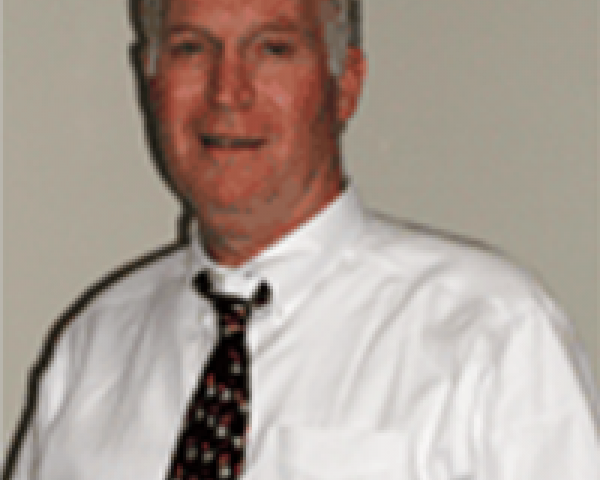I’d bet that most of you would be excited to learn that the factory of the future was being built in your hometown. Probably your enthusiasm would be driven by your knowledge of factories of the past. Unfortunately, the difference between the factory of the past and the factory of the future is change – TRANSFORMATIONAL CHANGE.
Warren Bennis (a very smart man) offered the following observation in "New Work Habits for a Radically Changing World" in 1994: “The factory of the future will have only two employees, a man and a dog. The man will be there to feed the dog. The dog will be there to keep the man from touching the equipment.”
From an insurance standpoint, my first questions on the new risks associated with the factory of the future would be:
- What is the workers' comp rate on a dog feeder and a watchdog?
- Can you afford to insure this type of new risk?
- Is Bennis right about the factory of the future?
- What are you doing to prepare to be a profitable agent insuring risks of the future?
Before you call me crazy, remember the travel agents, bookstores and video stores that are no more because they kept admiring their past success in the mirror of yesterday and did not consider the horizon of TRANSFORMATIONAL CHANGE THAT IS TECHNOLOGY.
The bad news is that TRANSFORMATIONAL CHANGE is coming (and in some cases is already here). The good news is the buyers and sellers in our industry who leverage this TRANSFORMATION can be big winners if they TRANSFORM with it or allow themselves to be TRANSFORMED by it.
Recently, I received an e-mail from a very creative industry leader, Ryan Collier, chief digital officer of Risk Placement Services, celebrating innovation/TRANSFORMATION:
“Trying to live the ‘eThink Insurance’ mantra every day. A fun side note for you – the platform that we have developed started offering a ‘friction free’ cyber buying experience officially in 2015. It literally takes a company about one minute (four questions) to buy cyber insurance. Since we have launched it we have taken our proprietary/partner insurance carrier (BCS Insurance) from ZERO premium up to the sixth-largest cyber insurance carrier by premium and third by policy count in the U. S. – all by completely redesigning the process. For me, it is all about the process – and tailoring that process toward the buyer and not the carrier. This is a nascent product that needs to be bought – not sold. We now have 12 products that can be quoted/bound/issued in a moment, which has been a boatload of fun and an extreme amount of work as this old industry doesn’t like to change.”
I call this intimacy being “client-defined and client-driven.” Ryan is a very innovative industry leader, a rare resource in a “me, too” world. We’re more copycats and fat cats than lean and mean innovators. Casual Friday is not innovation.
Our industry will be TRANSFORMED from without – not from within.
See also: 3 Ways to an Easier Digital Transformation
To reinforce this opinion, I offer the following from an insurance industry leader, Paul Carroll, who from his Innovator’s Edge platform asked: “Will Apple enter insurance? Google? Microsoft? Amazon?” He said, “Apple’s market value crested $1 trillion last week, and its big tech brethren Google, Microsoft and Amazon aren’t far behind; all are valued north of $800 billion.”
I wasn’t shocked until he said, “All have extensive data about customers. And all have the size to tackle mind-bending problems that insurance faces – by contrast, you’d have to combine AIG, Prudential and Allstate just to surpass $100 billion in market value.”
Now that I have your attention: Consider the comments that follow from Peter Drucker and Theodore Levitt, who were TRANSFORMATIONAL leaders in a world that did not voluntarily embrace change.
Levitt – “We habitually celebrate him [Henry Ford] for the wrong reason, his production genius. His real genius was marketing. We think that he was able to cut price and therefore sell millions of $500 cars because his invention of the assembly line had reduced the costs. Actually, he invented the assembly line because he had concluded that at $500 he could sell millions of cars. Mass production was the result, not the cause, of his low prices."
Peter Drucker, in a Wall Street Journal article titled "The Five Deadly Business Sins" (Oct. 21, 1993), explains the need for a new paradigm in all of our operations:
“The third deadly sin is cost-driven pricing. The only thing that works is price-driven costing. Most Americans and practically all European companies arrive at their prices by adding up all costs and then putting a profit on top. And then, as soon as they have introduced the product, they have to start cutting the price, have to redesign the product at enormous expense, have to take losses – and often have to drop a perfectly good product because it is priced incorrectly. Their argument – ‘we have to recover our costs and make a profit.’ This is true but irrelevant: CUSTOMERS DO NOT SEE IT AS THEIR JOB TO ENSURE MANUFACTURERS A PROFIT.”
Drucker further states, “Cost-driven pricing is the reason there is no American consumer electronics industry any more.”
When I started in the agency business (1975), we were paid 25% commission on homeowners insurance. Agents boldly stated, “I won’t sell homeowners for less than that.” They were wrong. I believe, in my lifetime (and I’m old), insurance will be quoted net of commission or with full disclosure of commission. That will ensure TRANSFORMATIONAL CHANGE.
See also: Core Transformation Is Not Negotiable
Want to be here tomorrow? Heed Drucker's advice: “There are only two functions in business, marketing and innovation.” Our world is transforming because the people and the global marketplace are changing. They now enjoy unlimited options.
Consider the following simple outline of the marketing process:
- Who is your customer (prospect) base? As a niche of one, customers can shop anywhere.
- What are their wants and needs? Do not limit your research based on just what you sell.
- What products/services and client intimacy must you offer to meet these wants and needs?
- How will these be priced to sell?
- How will you anticipate these needs and deliver a solution to customers at a profit?
Plan to innovate everything: people, process, products, pricing, performance (expectations), places, etc. Try “everything,” and, if something doesn’t work, go back to what did. Your marketplace will be the judge and arbiter of what is good and what is not so good!
If this article starts making you sing "Crazy" – I like the Patsy Cline version best – consider how much online banking you do now and know that Capital Bank is now opening “branch cafes” in lieu of branch banks!








